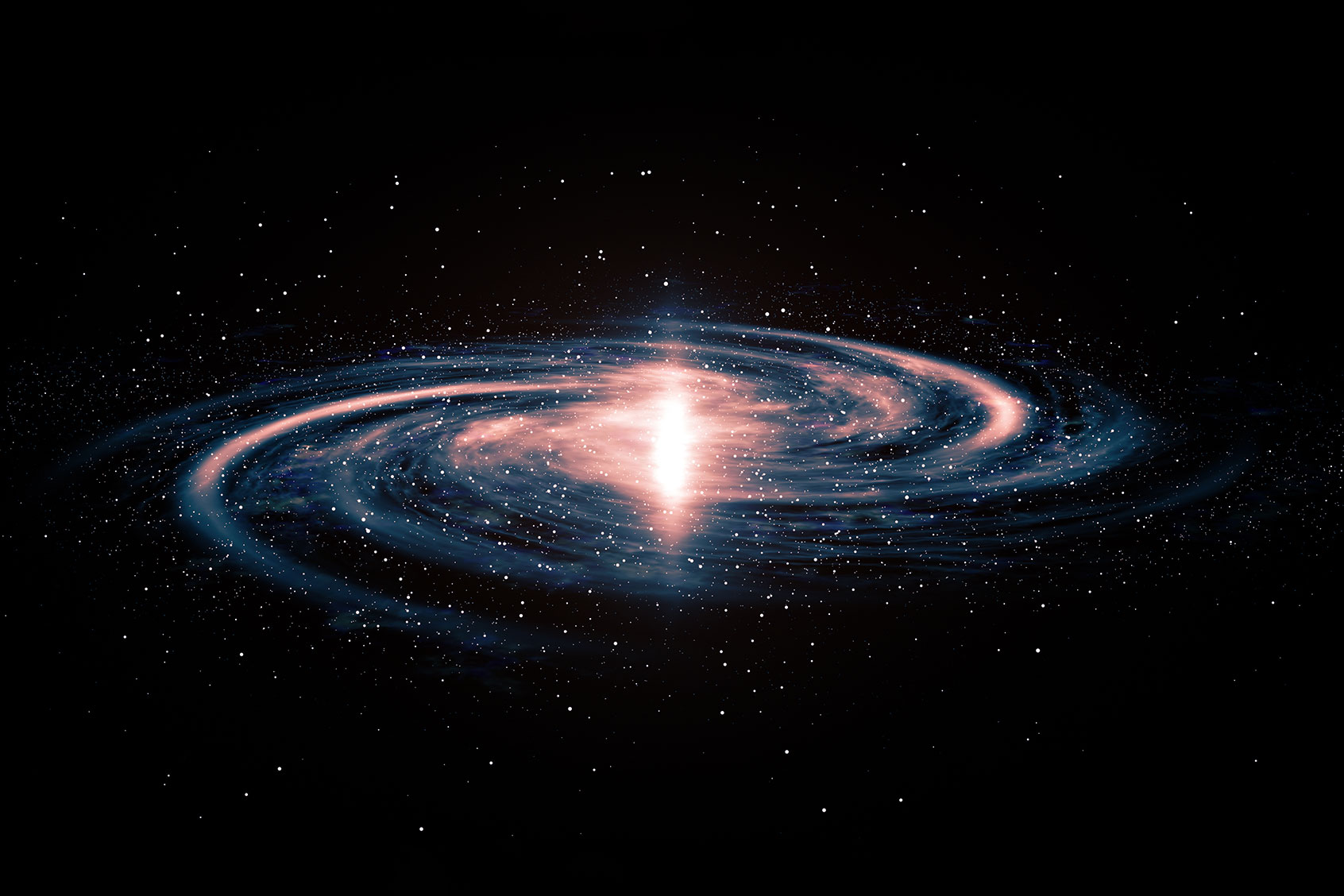The ancient Greeks may have been onto something when Pythagoras mused about the music of the spheres — a flawed, if romantic concept suggesting the mathematical relationships between celestial bodies could likewise emanate harmonious sounds not unlike violin strings.
Pythagoras was as far from the modern scientific mark as any 6th-century philosopher could be, but a new experiment at the Thomas Jefferson National Accelerator Facility has given the world a winking reminder that there's more to the music of our universe's birth — and that it can be detected in the resonance of protons, which still ring like a bell with the excited clamor of the Big Bang.
A team of nuclear physicists, led by research University of Connecticut research professor Stefan Diehl, took to the Jefferson Lab's world-class Continuous Electron Beam Accelerator Facility to explore the 3D structures of these protons. The team's research, published this month in the journal Physical Review Letters, has finally shed the first light on how these nucleon resonances work at their core.
"This is the first time we have some measurement, some observation, which is sensitive to the 3D characteristics of such an excited state," Diehl said in an Aug. 21 release. "In principle, this is just the beginning, and this measurement is opening a new field of research."
As far as cosmic origin stories go, Pythagoras' tale faces some stiff competition from the one told by Diehl.
"In the beginning," Diehl said, "the early cosmos only had some plasma consisting of quarks and gluons, which were all spinning around because the energy was so high. Then, at some point, matter started to form, and the first things that formed were the excited nucleon states. When the universe expanded further, it cooled down and the ground state nucleons manifested."
Want more health and science stories in your inbox? Subscribe to Salon's weekly newsletter Lab Notes.
While we've known since the middle of the last century that protons can resonate. And while we knew what those protons looked like when they were calm, we didn't have a clear picture of them in their most intriguing state. We couldn't see them ringing in a state of nucleon resonances, with their quarks going wild in high-energy vibration against each other. Until now.
To capture the protons in this excited state and explore their 3D resonances, the team sent a high-energy electron beam into a chamber of cooled hydrogen gas. The electrons in that beam slammed into the target's protons, exciting its internal quarks until the proton began to ring like a bell with nucleon resonance. Their results are published in the journal Physical Review Letters.
We couldn't see them ringing in a state of nucleon resonances, with their quarks going wild in high-energy vibration against each other. Until now.
The song is a short one, though, and the quarks lose their excitement quickly. Even so, they leave behind evidence of their existence — entirely new particles are born from the excited particles' energy as it fizzles out. These new particles are what the research team captured, and what allowed the team to reconstruct the resonance.
"With this information we can obtain a better understanding of how the resonances were formed and why they have the characteristics which they actually have. Such information can be used as an input to model the processes which were going on shortly after the Big Bang and initiated the transition to the matter which surrounds us today," Diehl told Salon in an email.
Each experiment like this allows physicists to tease out the properties of the early cosmos after the Big Bang.
For Diehl, the 3D analysis of these particles singing the ancient hymn of excited resonance is just the beginning.
"With these studies, we can learn about the characteristics of these resonances. And this will tell us things about how matter was formed in the universe and why the universe exists in its present form," he said.
To that end, the team will be coming back to the Jefferson Lab with more experimental plans in tow. They aim to scatter electrons from polarized protons and collect measurements from that scattering, to discern more about how the resonances behave. They also want to dig for more insight by producing a resonance in combination with a photon.
We need your help to stay independent
"The measurements we do, will tell us more about the properties of the resonances, like how their angular momentum is related to the movement of the quarks and gluons which form them. Or what the pressure distribution within a resonance looks like," Diehl told Salon.
Each experiment like this, Diehl said, allows physicists to tease out the properties of the early cosmos after the Big Bang. In doing so, we may yet hear a song that is as old as matter itself, a hymn of proton resonance sung by a choir of quarks since time began.
Read more
about the resonant origins of the universe

